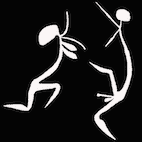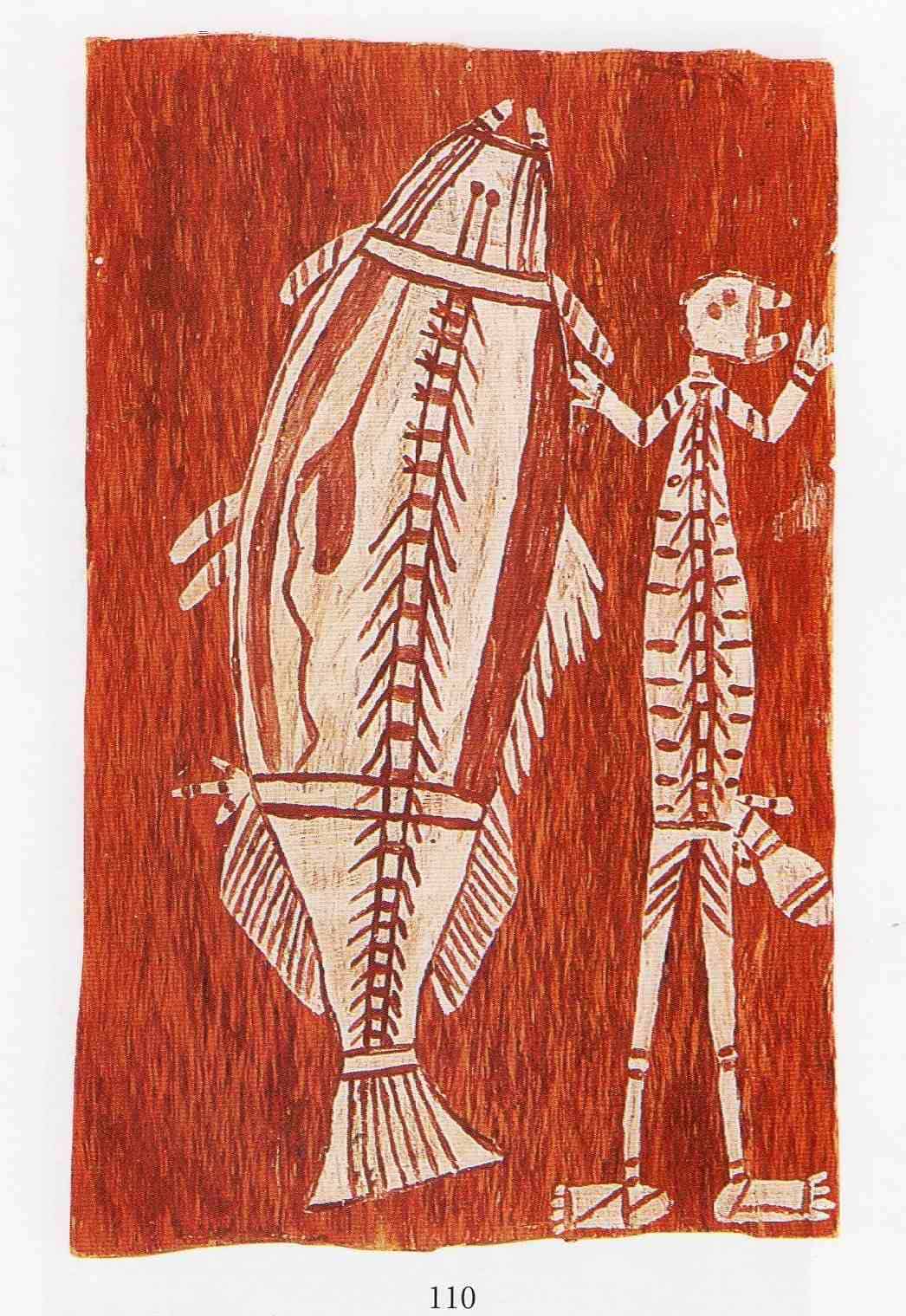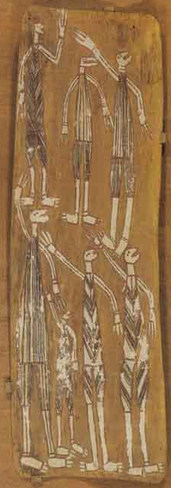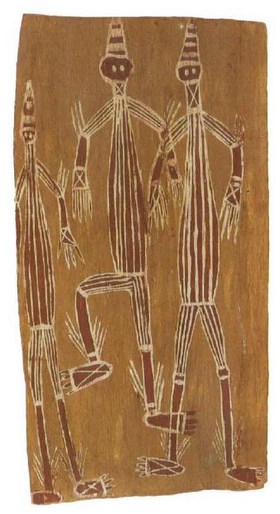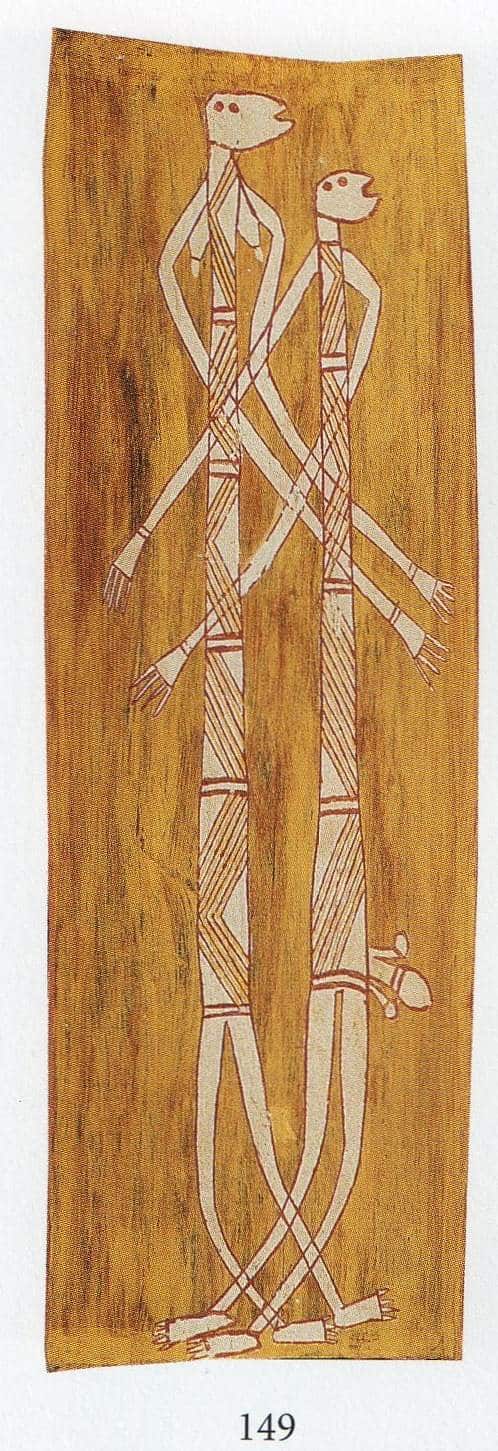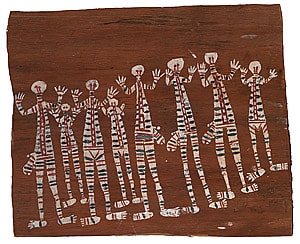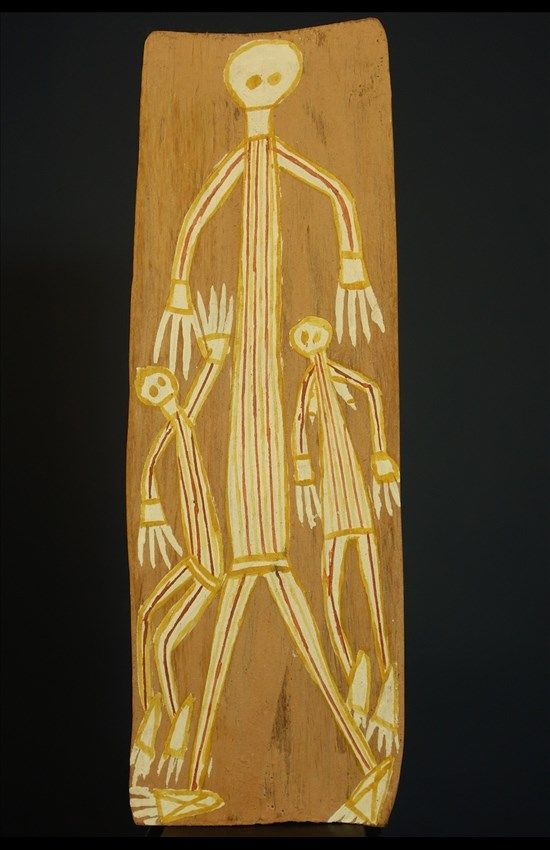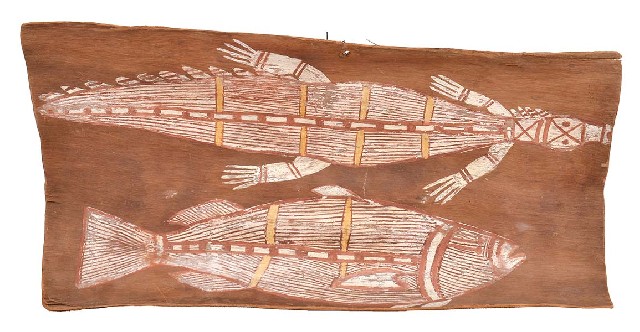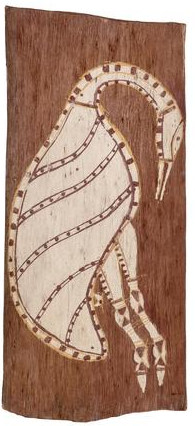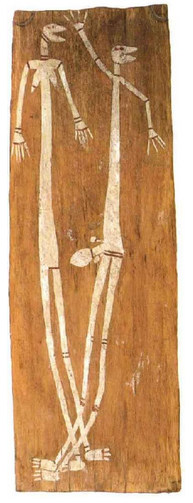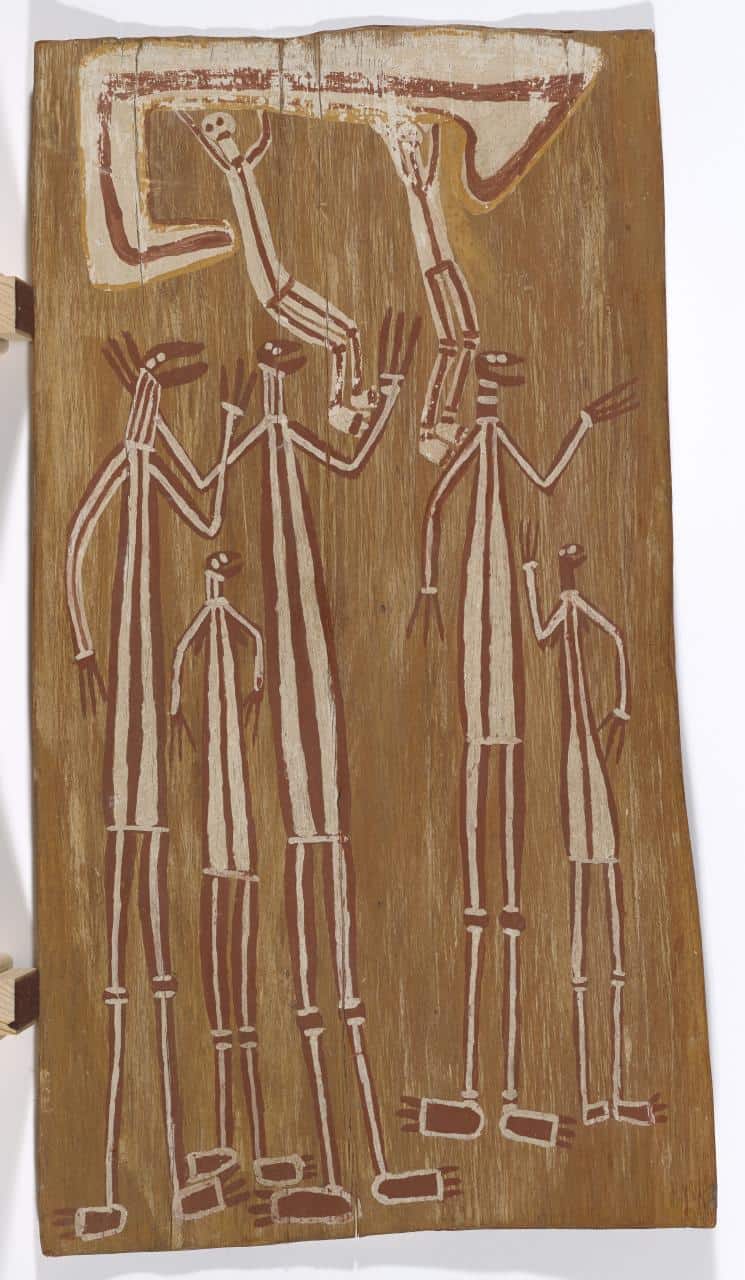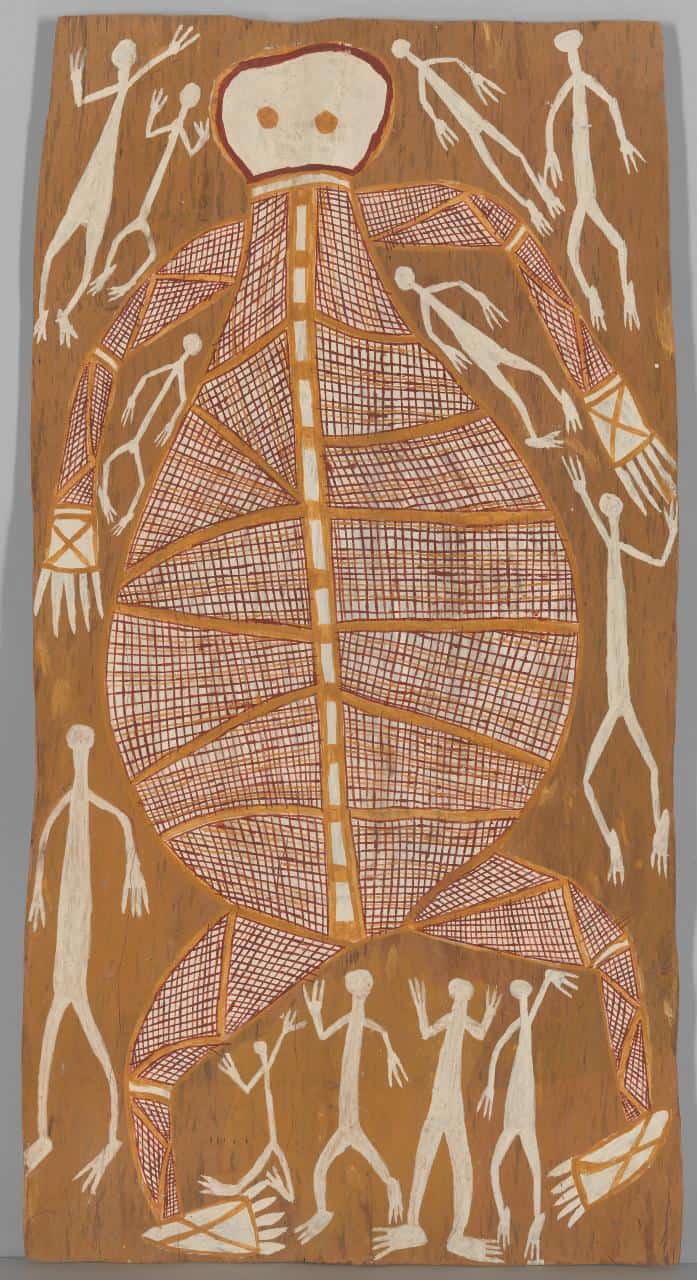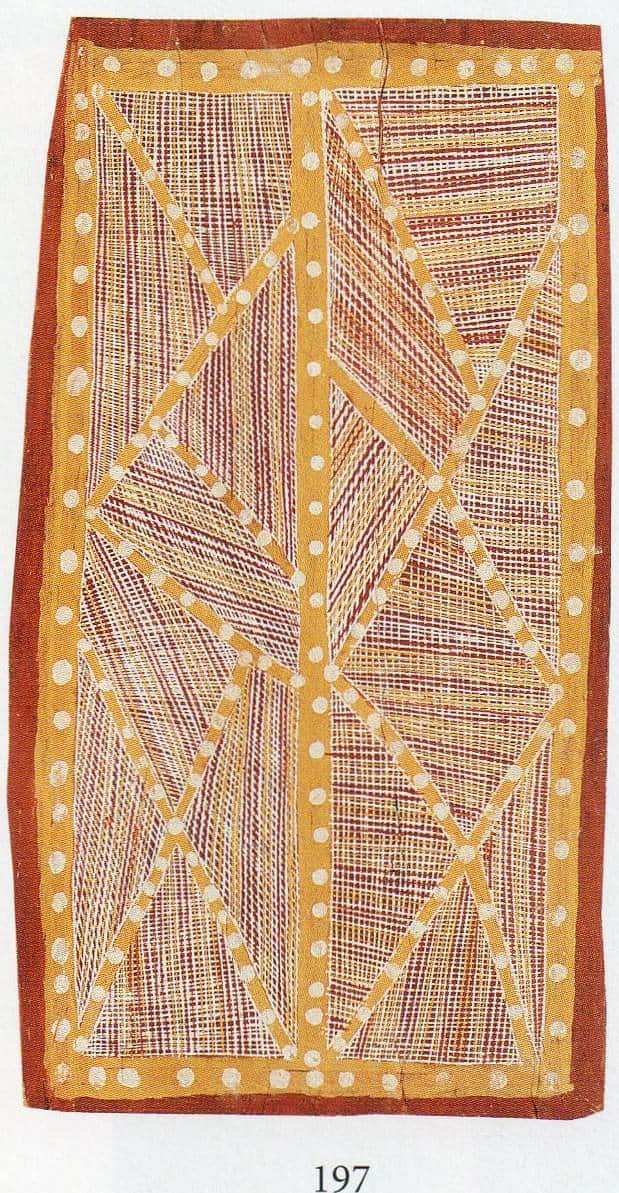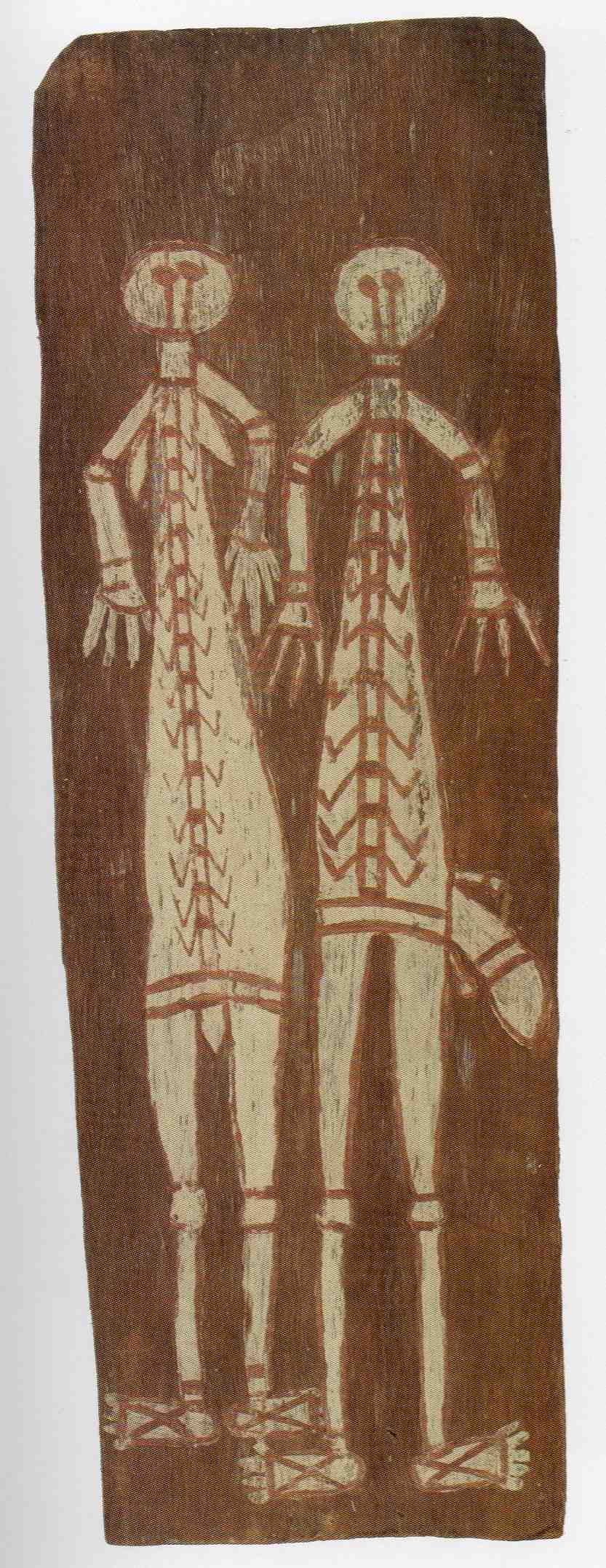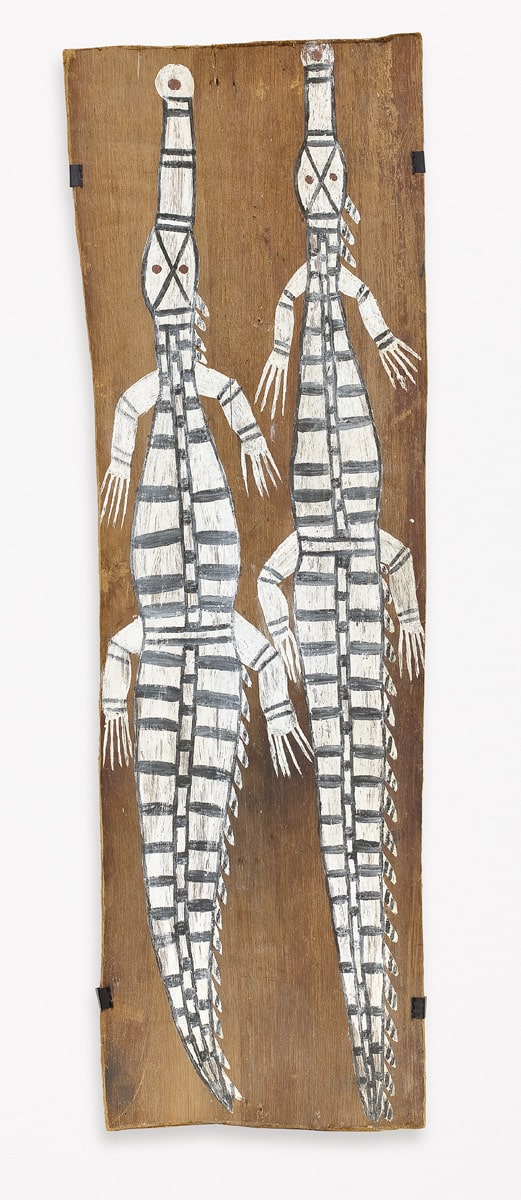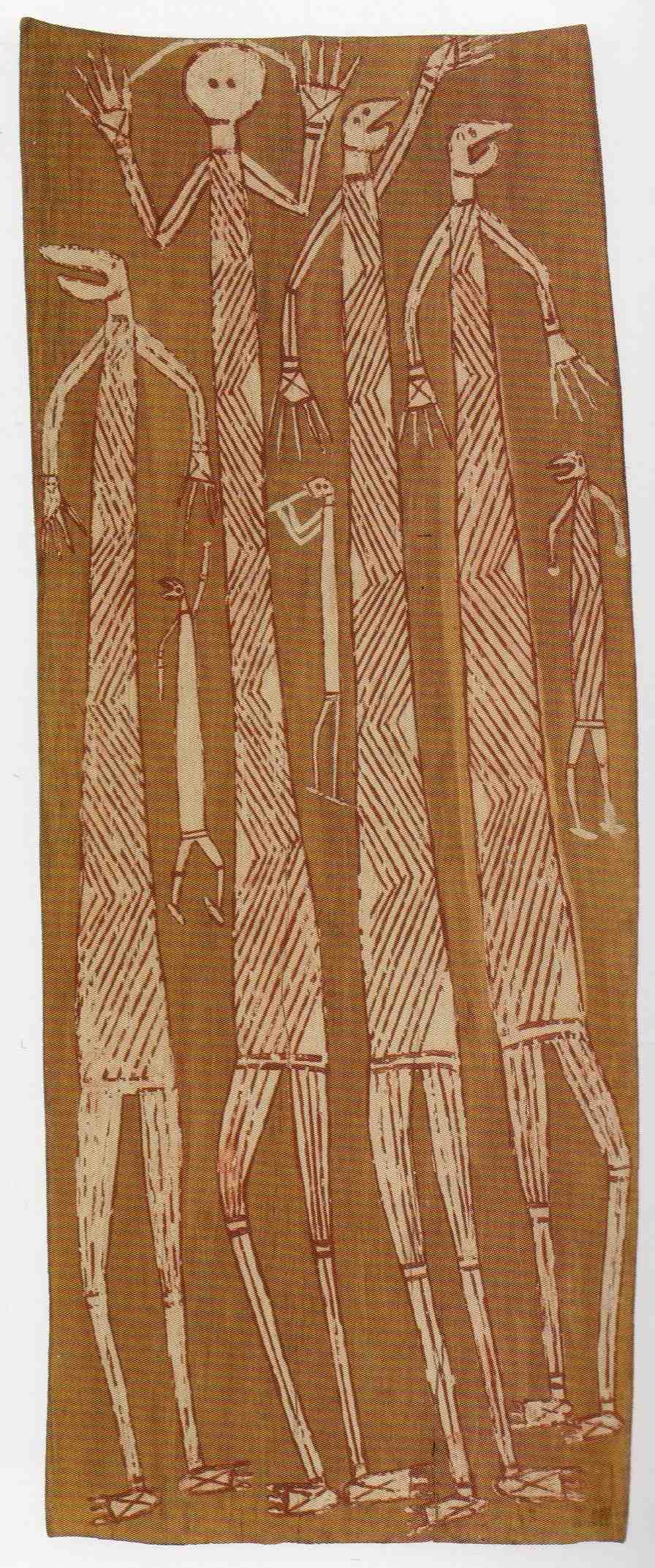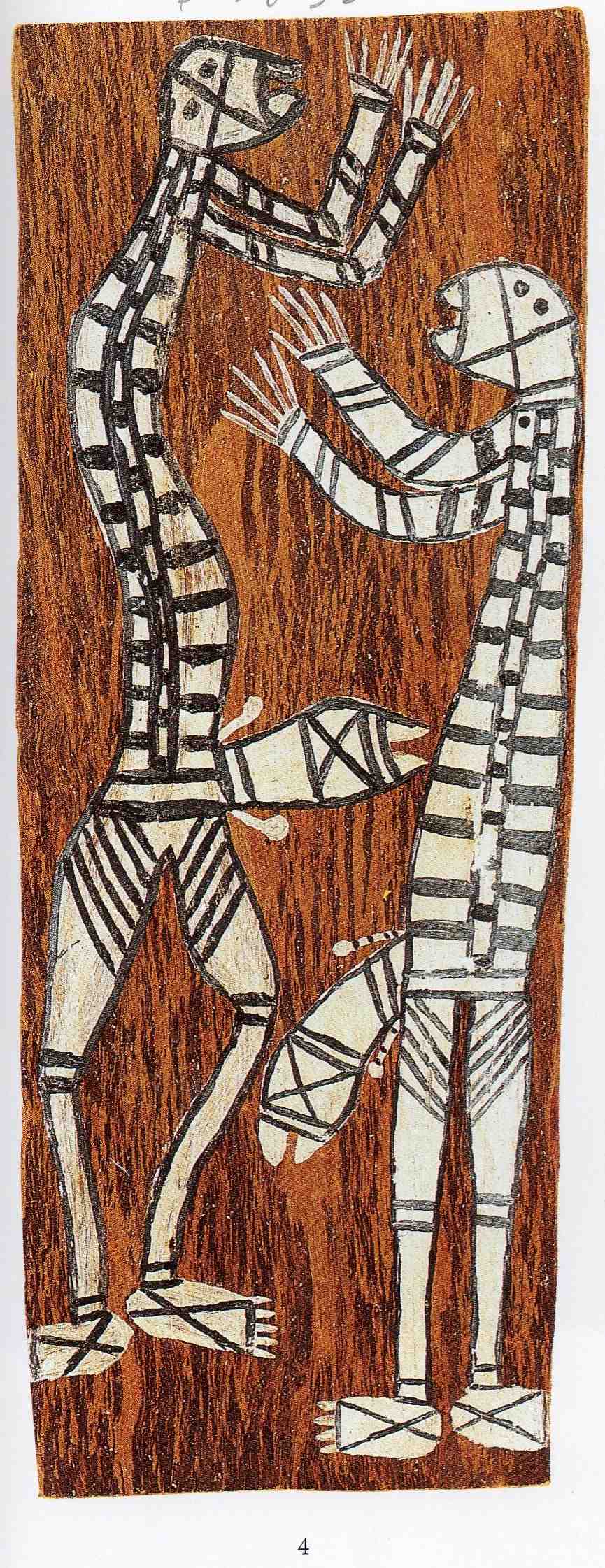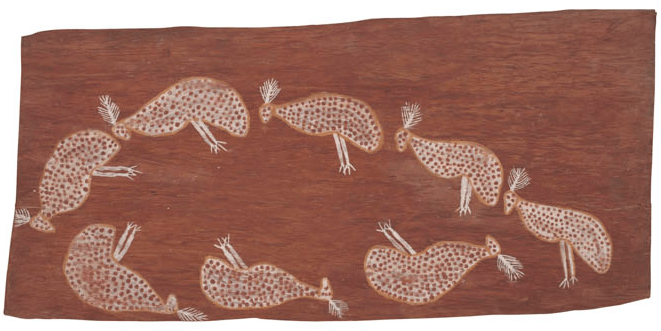January Nonganyari Crocker Island Bark Painter
The aim of this article is to assist readers in identifying if their aboriginal bark painting is by January Nonganyari. It compares examples of his work. He painted in a Crocker Island / Western Arnhem Land style.
If you have a January Nonganyari painting to sell please contact me. If you want to know what your bark painting is worth to me please feel free to send me a Jpeg. I would love to see it. Crocker island barks are my passion due to their freedom and expression.
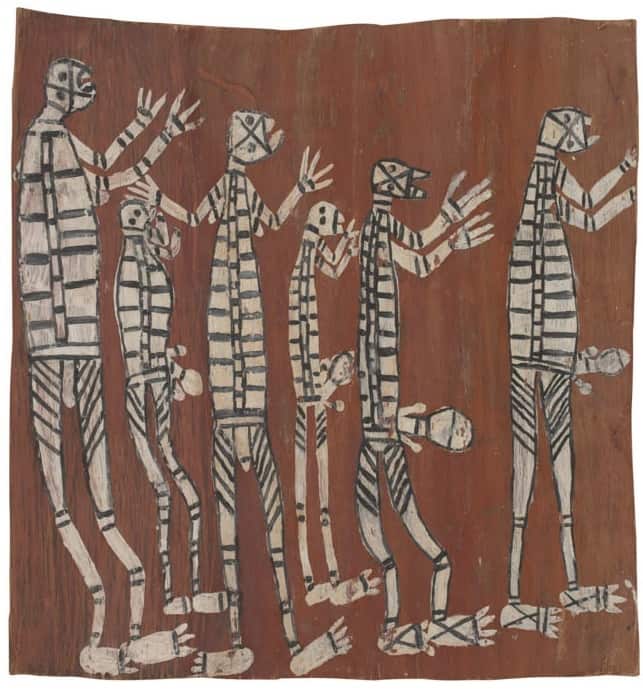
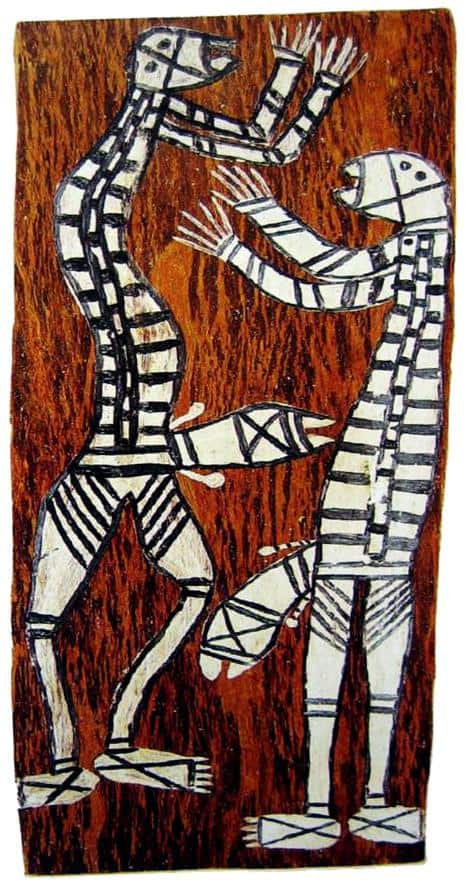
Style
In general bark paintings by January Nonganyari are very loose typical of early Crocker Island Aboriginal Art. January painted on a monotone background of red or yellow. His most collectible works are of thin tall Mimi Figures, which he does with a simple and playful composition.
His work is not complex and does not have any unneeded elements. In many of his paintings, the spirits appear to be waving. Mimi spirits are playful and he captures this element of their naughty playful nature.
Most of his barks are on a red or yellow background. His figures are predominantly white with details in black or red. Some of his most distinctive works have a zebra feel to them.
January did not adopt the raark style of cross-hatching but instead used more traditional parallel lines or blocks of color.
His earlier works have a clearly defined gender. His later works due to mission influence do not. He is one of those early aboriginal artists whose work was not affected by European bias.
Biography
He was born in 1918 and died 1973. His works are sometimes mistaken for other artists such as Namatbara, Jimmy Midjau Midjau or Samuel Wagbara.
Along with many other Arnhem Land Artists, there is not a lot of information readily available about January Nonganyari. He belonged to Djalama clan spoke Kunwinjku Language and was of Yirrdjdja moiety.
He was among the first group of artists on Crocker Island to have his work documented by anthropologists in the 1960’s.
If anyone knows more information about the biography of January, please contact me, as I would like to add it to this article.
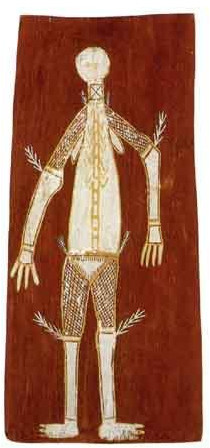
January Nonganyari Bark painting Images
The following are images are not a complete list of works by the artist but give a good idea of the style and variety of the artist.
